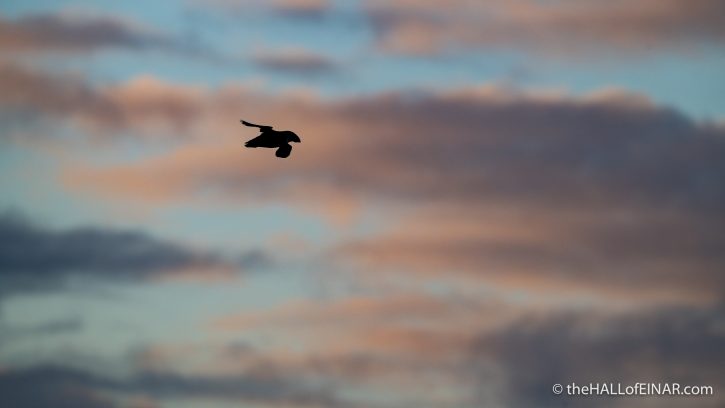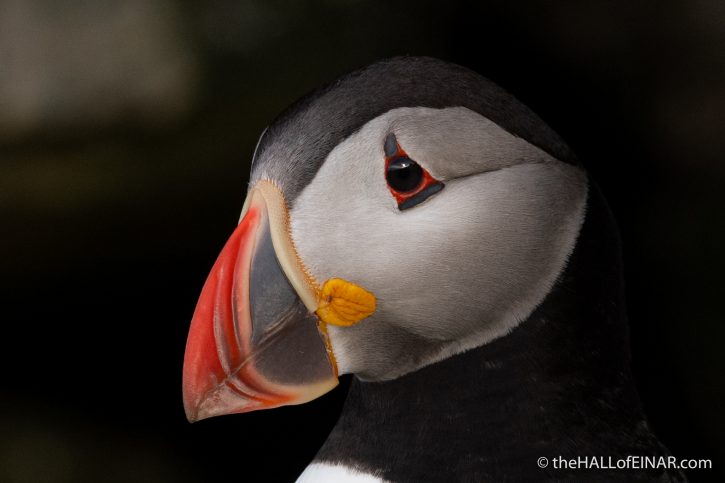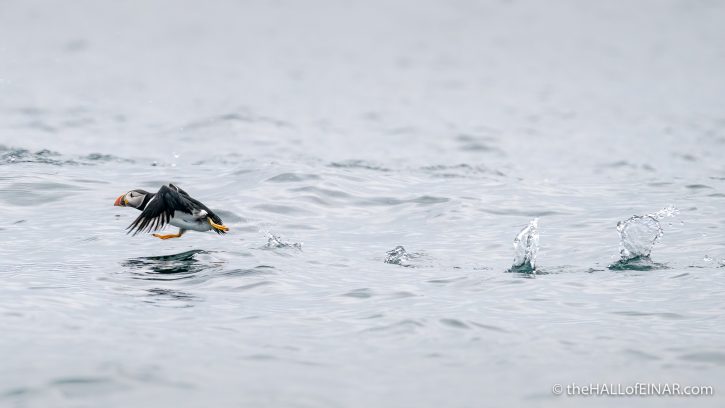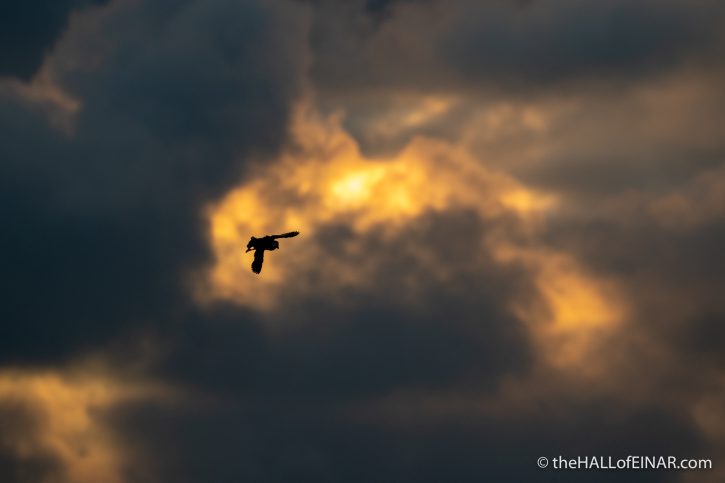Goodbye to Puffins

Puffins have gone from our shores for another year. It’s been a wonderful summer with them and a pleasure to see them arrive back at their burrows with fish and to catch the occasional glimpse of a Puffling.
In Reverend George Low’s Fauna Orcadensis of 1813. the Atlantic Puffin gets an interesting entry:
Found very frequent with congenerous birds in our rocks; builds its nest under ground; like the others lays but one egg.
His description continues:
The dimensions of those found in Hoy-head are the following: Length twelve inches, breadth twenty-two, weight thirteen ounces; the bill is much compressed, with three furrows, the fore-part of it is red, parted with a white line from a grayish root, which runs up the forehead, forming a ridge and a very sharp angle; the root of the bill is encompassed with a narrow whitish-coloured skin, pierced full of small holes or points; at the corner of each jaw is a piece of naked yellow skin; the nostrils are long and narrow, looking downwards; the eyes are fine, sparkling, and sharp while alive, the irides dusky, and the edges of the eyelids red ; on the eyelids are two odd naked callosities, which together form a triangle, as the upper one is of itself, the like not to be found in any other bird round these isles which has come to my knowledge. Both the cheeks and round the eyes are gray, under the chin a little darker; from the eyes runs a remarkable parting of the feathers, very visible while the bird is alive, but soon obliterated when it is dead; the top of the head, whole upper side of the body, wings, and tail, are black, with a collar of the same round the neck; the breast and belly white; the inside of the wings dusky; the legs and feet are yellow, with black claws, the innermost of which is much hooked; the tail short and rounded.
That’s a great description from the days before photography. They say a picture’s worth a thousand words, so:

Reverend Low continues:
This, too, is one of the birds for which our rock-men venture life and limbs. The flesh is very rank and fishy tasted. It takes flight with great difficulty, and is often run down with boats, but can fly very well when it once gets wing. Our people take these from their holes with a stick, at the point of which is an iron hook; but they must take great care both of this and the former, for they bite very severely, and the form of the bill makes the impression still more strong.
“Rank and fishy tasted”? That doesn’t seem to have stopped them eating Puffins, though. It’s odd to think that one of the main reasons wild creatures are extinct or rare is that humans have eaten them. It’s no wonder that Puffins “bite very severely”. Good on them.
Puffins can certainly fly very well when they get “on the wing”.

I have observed many of this species drove ashore in a sudden storm, that is, when caught suddenly in a gale of wind, which is a further proof of the difficulty they have to take wing from a level; indeed, all the motions of the sea-birds, except swimming, are extremely awkward.
Extremely awkward motions? Not really. I find them elegant beyond measure.
Goodbye Puffins. See you next year.
